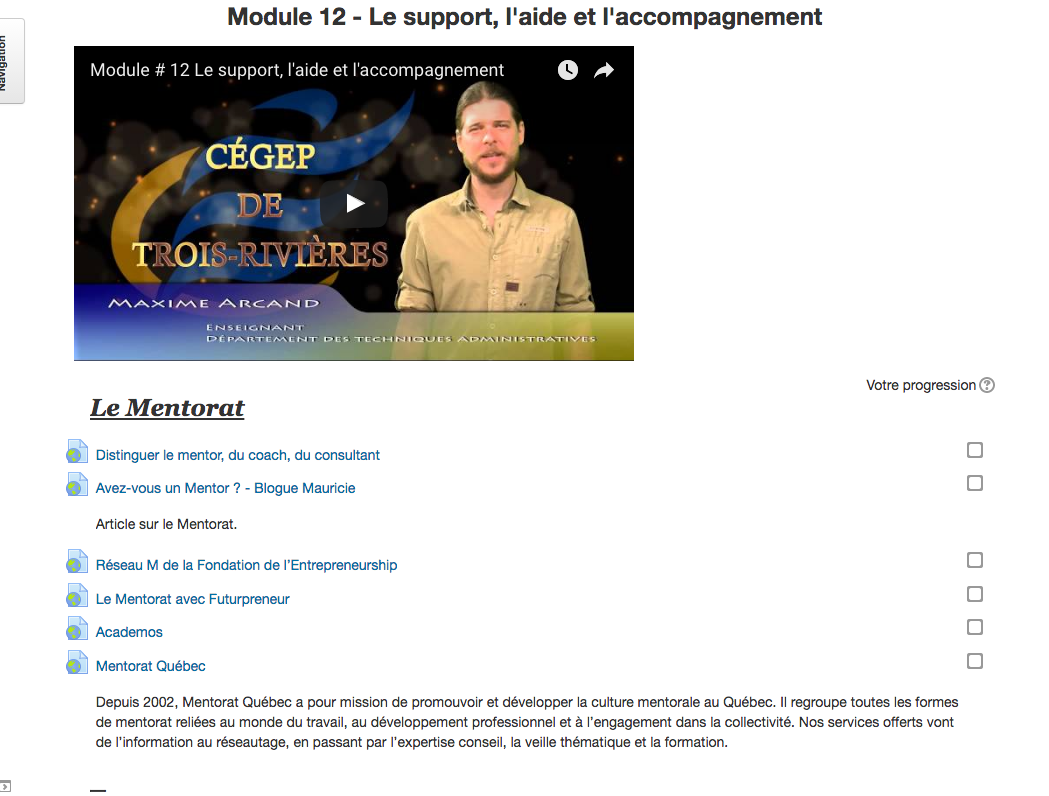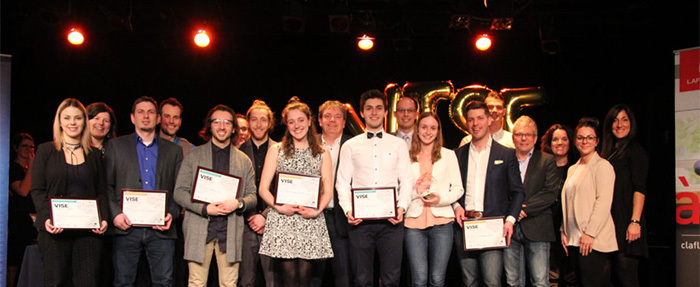Educational Intrapreneurship For Pedagogical And Digital Innovation
I joined the Business Administration Department of the Cégep de Trois-Rivières as a teacher 5 years ago. At that time, reflection was already underway on the eventual revision of the Entrepreneur course given at the college. Even if the importance of the course was recognised by all of the members of the Entrepreneurship Roundtable, the traditional teaching strategy used and the mitigated interest of the students beginning in entrepreneurship required that the course format be revisited. My mission was clear: thoroughly review the course and at the same time integrate new teaching methods for the digital age. I then called upon my intrapreneurship skills to develop the rest of the project.
The Project in its Early Phase
Before I arrived, the Entrepreneur course was based on proven pedagogical activities; nevertheless, it needed to be adapted to a context that had evolved over the years and to participants that did not have an entrepreneurial profile. It must also be said that, at the time, the need to align the college’s pedagogical intentions with the new perspectives in teaching was becoming stronger. For instance, the college’s board of administration said that it strongly supported the thorough teaching of entrepreneurial skills adapted to the expectations of the student community. My teaching experience in the Business Administration program put me in a good position to tackle this challenge and I accepted enthusiastically.
Revolutionizing the Course
Initially, the content of the course was better suited to students who had some rudimentary knowledge in entrepreneurship. More precisely, the objectives, the theory and the pedagogical activities that composed the course were mainly for learners who wanted to prepare a business plan for a project they already had. In order to remodel the course and make it more accessible to everyone (from neophytes to apprentice entrepreneurs), I did the following:
- Searched for up-to-date and practical online content, either texts or videos.
- Redesigned the course almost completely by reconfiguring the content into 12 modules.
- Proposed a new pedagogical scenario.
- Recorded interviews with “real” entrepreneurs on video. The insight shared by these business leaders was not only inspiring, but it helped students avoid some common startup mistakes.
Interview on the importance of networking with Stella Montreuil, President of the Cultural Development Corporation of Trois-Rivières.
Revisiting the Pedagogical Scenario
Essentially, the new pedagogical scenario offered diverse teaching methods and proposed a hybrid format that allowed students to learn freely.
- Students had some homework to do in each module.
- There were activities in class (every second week usually) where learners were in contact with local business representatives.
- In the weeks where there were no activities, I was available to answer questions and to provide individual support to people working on projects.
- By way of evaluation, students were asked to summarize their learning and to do activities that they recorded in a logbook in Google Suite.
I don’t believe that errors are necessary for learning to occur. It is true that failure is part of the learning process. Some people think that in order for students to learn, they should be allowed to embark on projects that are doomed to fail! That is a recipe for demotivating students because they will see that the errors could have been avoided with better supervision. In my opinion only “authentic” errors are conducive to learning. I try to help the apprentice entrepreneurs avoid simple yet widespread missteps in order to accelerate their development.
Key Digital Tools
The merit of these technological choices emerged out of the redesign of the course:
- Moodle
- All of the course content was accessible on the Moodle platform starting in 2014. Using Moodle gave the students more autonomy and allowed them to complete modules at their own pace, within the time allowed.
- Google Drive
- This digital tool hosted the electronic logbooks where students constructed and organised what they were learning about the concepts and subjects seen in the modules. The logbook gave me some insight into each individual student’s learning process, progress and difficulties. From the learners’ perspective, the logbook provided an opportunity to assess their performance and could be kept as reference material at the end of the course.
- YouTube
- I created a YouTube channel to keep both the videos that I found as well as the videos that I produced with the participation of the entrepreneurs. Other than the relevance of the subjects presented, the videos also provided a different way of presenting the course content.

Dashboard of a course module hosted on the Moodle platform
Clear Results
This project may have caused some disturbance, but the results were very conclusive:
- The new content paired with a new way of presenting it made the course more attractive and stimulating for the students.
- Adapting the content to meet the needs of a wider audience (from novice to skilled to experienced students) enabled learning and fostered perseverance.
- Classroom administration was substantially improved thanks to Google Drive. Indeed, there were a lot less paper documents to manage for both the students and me.
- The conferences and other business events presented great networking opportunities and provided a close personal contact with experienced entrepreneurs.
This pedagogy that places students at the heart of the learning process has an impact on their career choice. Indeed, this teaching method gives the students the opportunity to weigh several options. Students can consider whether they wish to join the business world as self-employed workers, entrepreneurs or intrapreneurs.
To give students some hands-on experience, I participate in various career-related projects that make it possible for students to broaden the scope of their skills (transitioning from theory to practice) as well as get involved in the community. I supervise the students who participate in the Startup weekend [in French], an initiative that gets them to think up and then propose a business idea. I also help organise the Vise dans le mille competition [in French], another extracurricular entrepreneurial activity that is designed to encourage students to create a new business. The interest of these 2 activities is to offer the crucial support that is needed to bring the students’ business ideas to fruition and thus, much of my involvement consists in providing individualised support to students with projects. I sometimes continue to coach students even after they have finished their college studies.

The winners of the Vise dans le mille competition, proudly showing their certificates.
The Intrapreneurial Process and its Challenges
The most frequent stumbling blocks that intrapreneurs, who implement innovative projects, may face are the lack of tolerance for change and the lack of support from management. I cannot insist enough on the important contribution of college management and colleagues to an organisational climate that fosters the emergence and implementation of new projects.
At the very beginning I had to overcome various obstacles:
- Designing a hybrid course that included less traditional, in-class hours and more hours of online supervision.
- Blocking a time in the schedule that allowed groups of students to be combined in order to optimize everyone’s time, when there were inspiring guest speakers for example.
- Colleagues’ miscomprehension of the teaching strategy.
- Difficulty obtaining initial resources and various relevant tools necessary to support technology-based teaching.
Some Tips
As of now, the initial obstacles have been overcome or are about to be. In the most difficult moments though, I had to draw upon all the energy I had to keep the idea alive. I have been asked what resources I relied on, here they are. To persevere, you must:
- Maintain your faith in yourself and in your project.
- Conserve your initial motivation and do not divert your attention from the primary objectives of the project, which are the students’ best interests, and the validity of the new entrepreneurial approaches.
- Keep in mind that a teacher’s role is to strive to prepare students for real life.
- Accept that your project must evolve with time and constantly adapt thereby, making it an entrepreneurial project in itself.
Personal experience leads me to believe that it is worthwhile explaining our project to the direction of the college as well as to our colleagues in order to gain their understanding and support. From a general perspective, it is important to demonstrate that it is in the college’s best interest to remain proactive and on the lookout for innovative practices. At least that is the meaning of intrapreneurship, but when we think about it, hasn’t teaching always evolved as a result of some innovators committed to making a difference?

